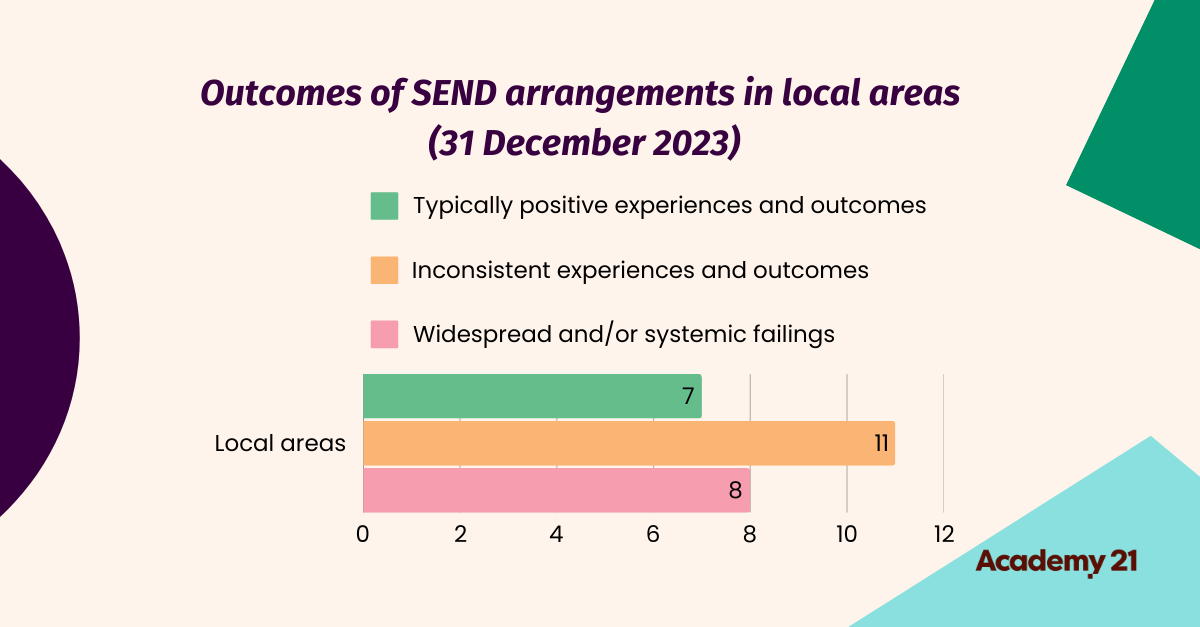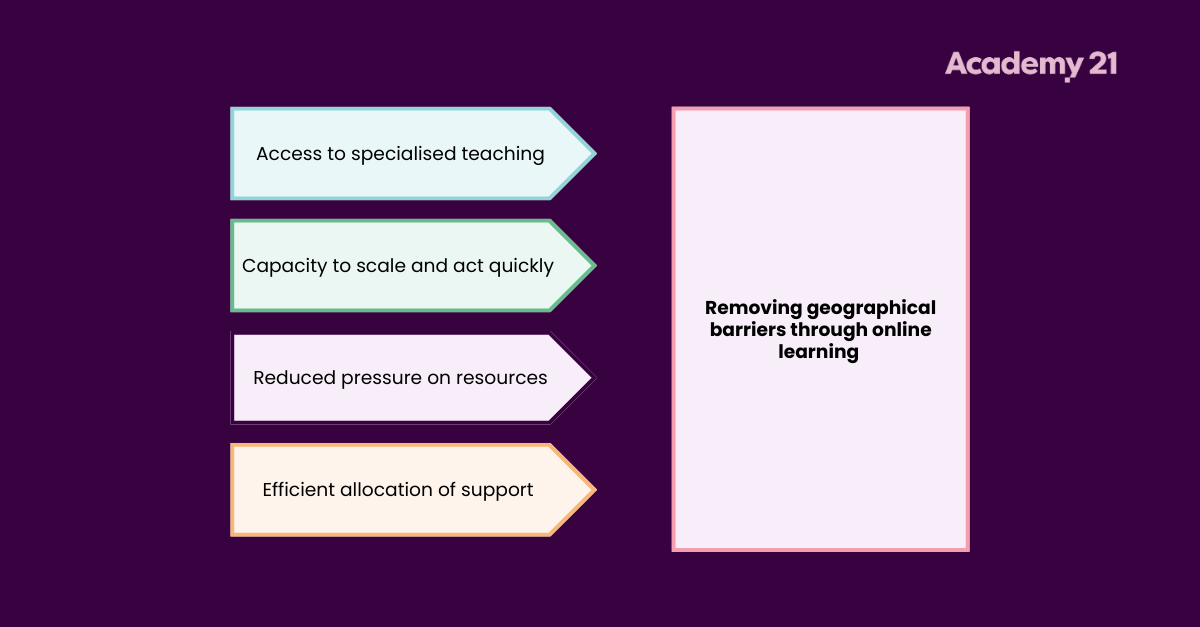What are additional support needs?
The UK’s additional needs system is at a turning point, opening the door to meaningful transformation.

With the Children’s Wellbeing and Schools Bill gaining momentum, ongoing changes in the inspectorate, and the Curriculum and Assessment Review evolving, the education landscape is shifting rapidly. These developments present not just challenges but opportunities to reimagine a system that works for everyone.
The journey hasn’t been without setbacks, from the unfulfilled aspirations of the 2014 SEND reforms to the drastic changes set by the SEND & Alternative Provision Improvement Plan. However, we have a chance to break the cycle of unfinished reform and take bold steps toward a brighter, more inclusive future for students with additional support needs.
This moment isn’t just about addressing the gaps; it’s about driving meaningful change fuelled by the shared commitment of organisations, educators, and families working together.
What are additional support needs?
Additional needs refer to the requirements of children and young people who need extra support to thrive academically, socially, and emotionally. This encompasses a wide range of situations, from learning disabilities and physical impairments to emotional and behavioural difficulties. Understanding these needs is the foundation for creating an inclusive and supportive educational environment.
Understanding the crisis in additional needs
To move beyond protracted planning cycles, we must understand the issues our system is currently facing and address them head-on. Our focus should be on ensuring the right action is taken now as today’s students cannot afford to wait. As we reimagine our approach to additional needs, we recognise that education in a decade may not resemble what it is today. This matters for the solutions we put in place.
Absenteeism rates
The challenges within the current additional needs system are multifaceted and deeply entrenched, impacting students, educators, and the wider community. One of the most pressing issues is the significant rate of absenteeism among students. According to recent data, one in five students misses a day of school every two weeks, which can severely affect their academic progress and social development. This level of absenteeism is often linked to unmet additional needs, where students may feel unsupported or unable to cope within the traditional educational framework.
The implications of this are far-reaching, affecting not only the individual student’s prospects but also placing a burden on the educational system to accommodate and reintegrate absent students.
Rising suspension rates
Rising suspension rates further complicate the landscape, with nearly 100,000 more yearly suspensions. Suspensions often serve as a temporary fix rather than addressing the root causes of behavioural issues, which can be linked to unaddressed special educational needs (SEN) or mental health challenges. The increasing number of students identified with SEN—just under 1.3 million—highlights the growing awareness and identification of these needs yet also points to a system struggling to provide adequate resources and support.
Mental health crisis
The number of students reporting a mental health condition is now seven times higher than a decade ago. This surge reflects broader societal issues, such as growing pressures from academic performance, social media influences, and economic instability. Schools, often the first line of support, are not always equipped with the necessary resources or trained personnel to address these complex mental health needs, leading to further strain on specialist services. Consequently, state specialist provision is overstretched and unable to provide timely support to students who need it the most.
Financial sustainability
The Department for Education projects a £4.6 billion deficit in local authority school funding by 2026, which threatens the viability of the current system. On top of that, approximately 30% of inspected Local Authorities share significant concerns about their area SEND provision.
Despite increased investment and dedicated practitioners, the system remains under-resourced and overstretched. Addressing these challenges requires a comprehensive, multi-faceted approach that includes policy reform, increased funding, and a commitment to building an inclusive educational environment that supports all students, particularly those with additional needs.

A new approach to additional support needs
We must reconsider our perceptions of education and how it is delivered and absorbed to address this generational challenge. How we live, work, and connect has transformed, exerting pressure on the fabric of our education system. In the alternative provision space, these challenges stretch the limits of what schools and authorities can achieve.
Despite these challenges, there is an opportunity for change. One potential solution involves embracing digital technology to build capacity, enhance instruction, and provide timely support.
Watch our new webinar on SEND, Scaffolding and Success - how to support our students with SEND to access the curriculum
Embracing digital solutions
Online alternative provision is not a novel concept. Many schools already judiciously use it, supported by a government-designed accreditation scheme to ensure quality and safeguarding practices. While online AP may not suit every learner, it can be a powerful intervention for those with additional needs, attendance challenges, medical requirements, and more.
Thousands of schools have embraced online alternative provision, witnessing its benefits to student reintegration.
Capacity through online learning
The availability of online alternative provisions like Academy21 can break the cycle of worsening problems, delayed support, and further estrangement from school. With live, interactive classes delivered by qualified teachers, students benefit from a change of environment, focused support, and renewed attention to their learning. A short-term online placement can help them get back on track, preventing inadequate provision or limited intervention.
Online alternative provision offers a flexible and scalable solution that can adapt to the needs of individual students. Removing geographical barriers can provide access to specialised teaching and resources that might not be available locally. This approach can also help alleviate the pressure on overstretched physical resources, allowing for a more efficient allocation of support.

Flexibility to adapt
Online education can accommodate a student’s existing commitments and broader needs. Many young people with additional needs have demands on their time, and maintaining a connection to their physical school community is vital. Online AP enables students to take live lessons at multiple points in the day, fitting around therapies, appointments, or when they can perform their best.
This flexibility is especially beneficial for students with medical conditions that affect their ability to attend school regularly. Take Holly’s inspiring story, for example—a former student with a severe heart and liver condition that kept her from attending school. Through Academy21 and our sister school, King’s InterHigh, Holly was able to access high-quality education and dedicated academic support. Remarkably, she managed to bridge the learning gaps of an entire missed school year (Year 11), all while balancing medical appointments and treatments.
Quality and visibility
A phenomenal teacher is one of the most significant protections we can offer young people. At Academy21, we provide live, adaptive teaching that builds relationships and re-engages students who have been disconnected from learning. Online education can fill educational gaps rapidly, employing strategies to model concepts, scaffold learning, assess progress, and deliver personalised feedback.
Technology also enhances a school’s ability to supervise. Schools can access monitoring information with online education, including lesson-by-lesson insights, live attendance, and resource access. This level of insight enables schools to understand student progress, make necessary adaptations, and recognise success—all crucial for successful reintegration.
Creating a better system for additional support needs
The challenges in our additional needs system are undeniable, but they also present an opportunity for transformative change. We can address the generational challenge of additional needs by embracing digital solutions like online alternative provision. It is time to move beyond yesterday’s logic and implement pragmatic yet radical changes that ensure every child with additional needs receives the support they deserve.



